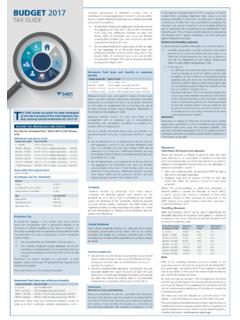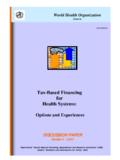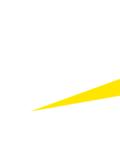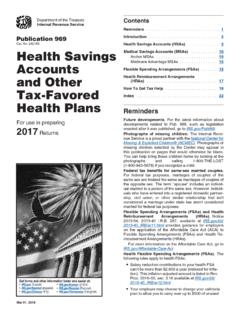Transcription of This SARS pocket tax guide has been developed to …
1 This SARS pocket tax guide has been developed to provide a synopsis of the most important tax, duty and levy related information for 2016/17. INCOME TAX: INDIVIDUALS AND TRUSTSTax rates (tax year ending 28 February 2017)Individuals and special trustsTaxable Income (R)Rate of Tax (R)0 188 00018% of taxable income188 001 293 60033 840 + 26% of taxable income above 188 000293 601 406 40061 296 + 31% of taxable income above 293 600406 401 550 10096 264 + 36% of taxable income above 406 400550 101 701 300147 996 + 39% of taxable income above 550 100701 301 and above206 964 + 41% of taxable income above 701 300 Trusts other than special trusts:Rate of Tax 41%Tax Rebates and Tax ThresholdsRebatesPrimaryR13 500 Secondary (Persons 65 and older)R7 407 Tertiary (Persons 75 and older)R2 466 AgeTax ThresholdBelow age 65 R75 000 Age 65 to below 75R116 150 Age 75 and overR129 850 Provisional TaxA provisional taxpayer is any person who earns income other than remuneration or an allowance or advance payable by the person s principal.
2 An individual is exempt from the payment of provisional tax if he or she does not carry on any business and his or her taxable income will not exceed the tax threshold for the tax year; or from interest, dividends, foreign dividends and rental from the letting of fixed property will be R30 000 or less for the tax tax returns, showing an estimation of total taxable income for the tax year, are required from provisional estates are not provisional fund lump sum withdrawal benefitsTaxable Income (R)Rate of Tax (R)0 25 0000% of taxable income 25 001 - 660 00018% of taxable income above 25 000660 001 - 990 000114 300 + 27% of taxable income above 660 000990 001 and above203 400 + 36% of taxable income above 990 000 Retirement fund lump sum withdrawal benefits consist of lump sums from a pension, pension preservation, provident, provident preservation or retirement annuity fund on withdrawal (including assignment in terms of a divorce order). Tax on a specific retirement fund lump sum withdrawal benefit (lump sum X) is equal to tax determined by applying the tax table to the aggregate of lump sum X plus all other retirement fund lump sum withdrawal benefits accruing from March 2009, all retirement fund lump sum benefits accruing from October 2007 and all severance benefits accruing from March 2011.
3 Less tax determined by applying the tax table to the aggregate of all retirement fund lump sum withdrawal benefits accruing before lump sum X from March 2009, all retirement fund lump sum benefits accruing from October 2007 and all severance benefits accruing from March fund lump sum benefits or severance benefitsTaxable Income (R)Rate of Tax (R)0 500 0000% of taxable income500 001 - 700 00018% of taxable income above 500 000700 001 1 050 00036 000 + 27% of taxable income above 700 0001 050 001 and above130 500 + 36% of taxable income above 1 050 000 Retirement fund lump sum benefits consist of lump sums from a pension, pension preservation, provident, provident preservation or retirement annuity fund on death, retirement or termination of employment due to attaining the age of 55 years, or an event such as sickness, an accident, injury, incapacity, or due to redundancy or termination of the employer s trade. Severance benefits consist of lump sums from or by arrangement with an employer due to relinquishment, termination, loss, repudiation, cancellation or variation of a person s office or on a specific retirement fund lump sum benefit or a severance benefit (lump sum or severance benefit Y) is equal to tax determined by applying the tax table to the aggregate of Y plus all other retirement fund lump sum benefits accruing from October 2007 and all retirement fund lump sum withdrawal benefits accruing from March 2009 and all other severance benefits accruing from March 2011.
4 Less tax determined by applying the tax table to the aggregate of all retirement fund lump sum benefits accruing before lump sum Y from October 2007 and all retirement fund lump sum withdrawal benefits accruing from March 2009 and all severance benefits accruing before severance benefit Y from March received by individuals from South African companies are generally exempt from income tax, but dividends tax at a rate of 15% is withheld by the entities paying the dividends to the individuals. Dividends received by South African resident individuals from REITs (listed and regulated property owning companies) are subject to income tax. Non-residents in receipt of those dividends are only subject to dividends DividendsMost foreign dividends received by individuals from foreign companies (shareholding of less than 10% in the foreign company) are taxable at a maximum effective rate of 15%. No deductions are allowed for expenditure to produce foreign exemptions Interest from a South African source earned by any natural person under 65 years of age, up to R23 800 per annum, and persons 65 and older, up to R34 500 per annum, is exempt from taxation Interest is exempt where earned by non-residents who are physically absent from South Africa for at least 182 days (or 183 days in a leap year) during the 12 month period before the interest accrues and the debt from which the interest arises is not effectively connected to a fixed place of business in South Africa of that fund contributionsAmounts contributed to pension, provident and retirement annuity funds during a tax year are deductible by members of those funds.
5 Amounts contributed by employers and taxed as fringe benefits are treated as contributions by the individual employee. The deduction is limited to of the greater of remuneration for PAYE purposes or taxable income (both excluding retirement fund lump sums and severance benefits). Furthermore, the deduction is limited to a maximum of R350 000. Any contributions exceeding the limitations are carried forward to the next tax year and are deemed to be contributed in that following year. The amounts carried forward are reduced by contributions set off when determining taxable retirement fund lump sums or retirement and disability expensesIn determining tax payable, individuals are allowed to deduct monthly contributions to medical schemes (a tax rebate referred to as a medical scheme fees tax credit) up to R286 each for the individual who paid the contributions and the first dependant on the medical scheme and R192 for each additional dependant; and in the case of an individual who is 65 and older, or if an individual, his or her spouse, or his or her child is a person with a disability, of the sum of qualifying medical expenses paid and borne by the individual, and an amount by which medical scheme contributions paid by the individual exceed three times the medical scheme fees tax credits for the tax year.
6 Or any other individual, 25% of an amount equal to the sum of qualifying medical expenses paid and borne by the individual, and an amount by which medical scheme contributions paid by the individual exceed four times the medical scheme fees tax credits for the tax year, limited to the amount which exceeds of taxable income (excluding retirement fund lump sums and severance benefits).DonationsDeductions in respect of donations to certain public benefit organisations are limited to 10% of taxable income (excluding retirement fund lump sums and severance benefits). The amount of donations exceeding 10% of the taxable income is treated as a donation to qualifying public benefit organisations in the following tax allowances and advancesWhere the recipient is obliged to spend at least one night away from his or her usual place of residence on business and the accommodation to which that allowance or advance relates is in the Republic of South Africa and the allowance or advance is granted to pay for meals and incidental costs, an amount of R372 per day is deemed to have been expended incidental costs only, an amount of R115 for each day which falls within the period is deemed to have been the accommodation to which that allowance or advance relates is outside the Republic of South Africa, a specific amount per country is deemed to have been expended.
7 Details of these amounts are published on the SARS website under Legal & Policy / Secondary Legislation / Income Tax Notices / allowanceRates per kilometre, which may be used in determining the allowable deduction for business travel against an allowance or advance where actual costs are not claimed, are determined by using the following table:Value of the vehicle(including VAT) (R)Fixed cost(R )Fuel cost(c/km)Maintenancecost (c/km)0 - 80 00026 001 - 160 00047 001 - 240 00068 001 - 320 00087 001 - 400 000105 001 - 480 000125 001 - 560 000144 784 560 000144 : 80% of the travelling allowance must be included in the employee s remuneration for the purposes of calculating PAYE. The percentage is reduced to 20% if the employer is satisfied that at least 80% of the use of the motor vehicle for the tax year will be for business fuel cost may be claimed if the employee has not borne the full cost of fuel used in the vehicle and no maintenance cost may be claimed if the employee has not borne the full cost of maintaining the vehicle ( if the vehicle is covered by a maintenance plan).
8 The fixed cost must be reduced on a pro-rata basis if the vehicle is used for business purposes for less than a full year. The actual distance travelled during a tax year and the distance travelled for business purposes substantiated by a log book are used to determine the costs which may be claimed against a travelling :Where the distance travelled for business purposes does not exceed 8 000 kilometres per annum, no tax is payable on an allowance paid by an employer to an employee up to the rate of 329 cents per kilometre, regardless of the value of the vehicle. However, this alternative is not available if other compensation in the form of an allowance or reimbursement (other than for parking or toll fees) is received from the employer in respect of the deductionsOther than the deductions set out above an individual may only claim deductions against employment income or allowances in limited specified situations, bad debt in respect of BenefitsEmployer-owned vehicles The taxable value is of the determined value (the cash cost including VAT) per month of each vehicle.
9 Where the vehicle is the subject of a maintenance plan when the employer acquired the vehicle the taxable value is of the determined value; or acquired by the employer under an operating lease the taxable value is the cost incurred by the employer under the operating lease plus the cost of fuel 80% of the fringe benefit must be included in the employee s remuneration for the purposes of calculating PAYE. The percentage is reduced to 20% if the employer is satisfied that at least 80% of the use of the motor vehicle for the tax year will be for business purposes On assessment the fringe benefit for the tax year is reduced by the ratio of the distance travelled for business purposes substantiated by a log book divided by the actual distance travelled during the tax year On assessment further relief is available for the cost of licence, insurance, maintenance and fuel for private travel if the full cost thereof has been borne by the employee and if the distance travelled for private purposes is substantiated by a log or low-interest loansThe difference between interest charged at the official rate and the actual amount of interest charged.
10 Is to be included in gross accommodationThe value of the fringe benefit to be included in gross income is the lower of the benefit calculated by applying a prescribed formula or the cost to the employer if the employer does not have full ownership of the formula will apply if the accommodation is owned by the employee, but it does not apply to holiday accommodation hired by the employer from non-associated TAX: COMPANIESF inancial years ending on any date between 1 April 2016 and 31 March 2017 TypeRate of Tax (R)Companies28% of taxable incomeINCOME TAX: SMALL BUSINESS CORPORATIONSF inancial years ending on any date between 1 April 2016 and 31 March 2017 Taxable Income (R)Rate of Tax (R)0 75 0000% of taxable income75 001 365 0007% of taxable income above 75 000365 001 550 00020 300 + 21% of taxable income above 365 000550 001 and above59 150 + 28% of taxable income above 550 000 TURNOVER TAX FOR MICRO BUSINESSESF inancial years ending on any date between 1 March 2016 and 28 February 2017 Taxable turnover (R)Rate of tax (R)0 335 0000% of taxable turnover335 001 500 0001% of taxable turnover above 335 000500 001 750 0001 650 + 2% of taxable turnover above 500 000750 001 and above6 650 + 3% of taxable turnover above 750 000 RESIDENCE BASIS OF TAXATIONR esidents are taxed on their worldwide income, subject to certain exclusions.















